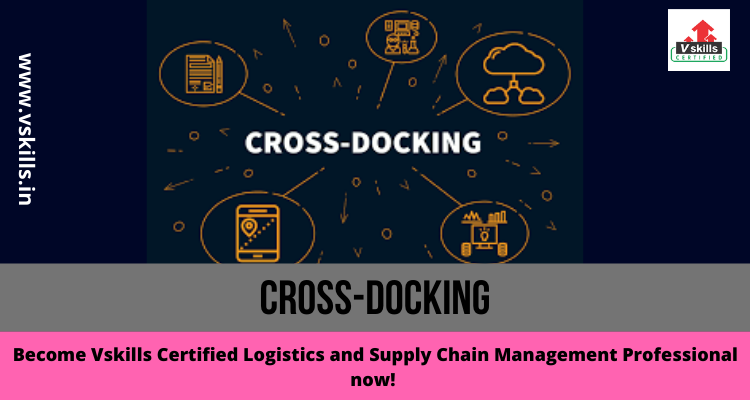Cross-docking is the practice of unloading goods from inbound delivery vehicles and loading them directly onto outbound vehicles. By eliminating or minimizing warehouse storage costs, space requirements and inventory handling, cross-docking can streamline supply chains and help them move goods to market faster and more efficiently.
Cross docking is a logistics procedure where products from a supplier or manufacturing plant are distributed directly to a customer or retail chain with marginal to no handling or storage time. Cross docking takes place in a distribution docking terminal; usually consisting of trucks and dock doors on two (inbound and outbound) sides with minimal storage space. The name ‘cross docking’ explains the process of receiving products through an inbound dock and then transferring them across the dock to the outbound transportation dock.
Cross-docking usually takes place in a dedicated docking terminal in a warehouse, where inbound goods are first received at a dock and sorted according to their final destinations. They are then moved to the other side of the dock via forklift, conveyor belt or other equipment and loaded on outbound vehicles.
Cross-docking works best with products that need to be transported quickly, such as food, that have already been sorted and labeled for customers, do not need quality inspections or have steady demand.
Some manufacturers use cross-docking in their own facilities, moving finished goods directly from production to an outbound dock without first storing them in the warehouse. Not having to store the products avoids associated labor costs for order fulfillment processes, such as picking and putting away goods, or the use of fulfillment technologies such as pick-to-light. Other industry sectors employ cross-docking, including distributors and retailers such as Wal-Mart Stores Inc.
Some of the greatest efficiencies from cross-docking come from consolidating less-than-truckload (LTL) inbound shipments. LTL shipping companies can save money by using fewer vehicles on the outbound side. Conversely, breaking down large, full loads in a cross-docking operation can make delivery to customers more efficient.
Some of the main reasons cross docking is implemented is to:
- Provide a central site for products to be sorted and similar products combined to be delivered to multiple destinations in the most productive and fastest method. This process can be described as “hub and spoke”
- Combine numerous smaller product loads into one method of transport to save on transportation costs. This process can be described as ‘consolidation arrangements’.
- Break down large product loads into smaller loads for transportation to create an easier delivery process to the customer. This process can be described as ‘deconsolidation arrangements’.
Cross-docking has some disadvantages, however. For one thing, setting up a cross-docking terminal requires significant planning and design, and the process must be closely monitored to ensure it is working as intended. Cross-docking also requires maintaining a large number of carriers to ensure there are enough vehicles — typically trucks — to deliver goods efficiently to customers. It also puts pressure on the logistics provider and its suppliers to keep a steady stream of customer-ready goods arriving at inbound docks, since there is little time and infrastructure for inventory management.



